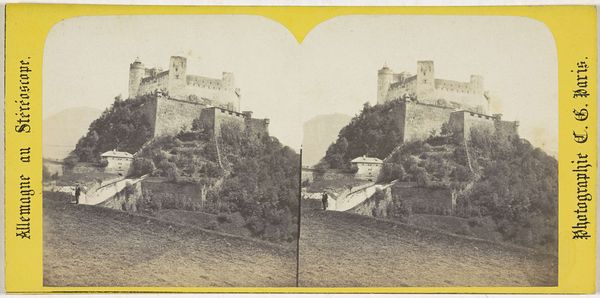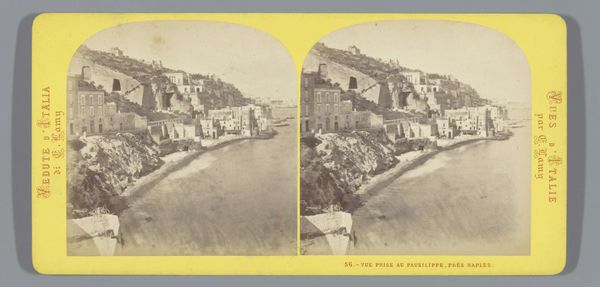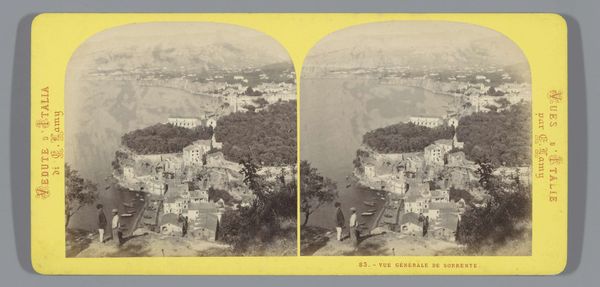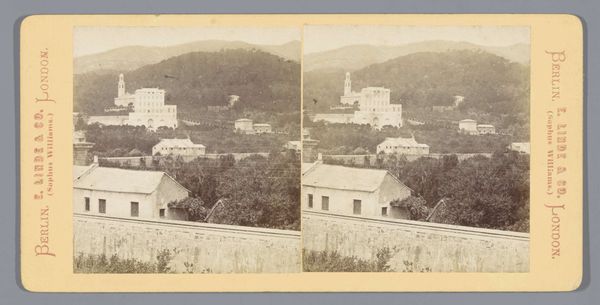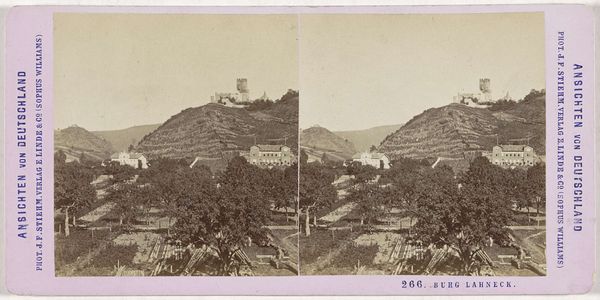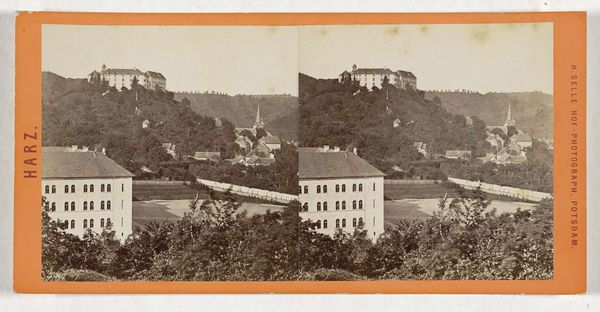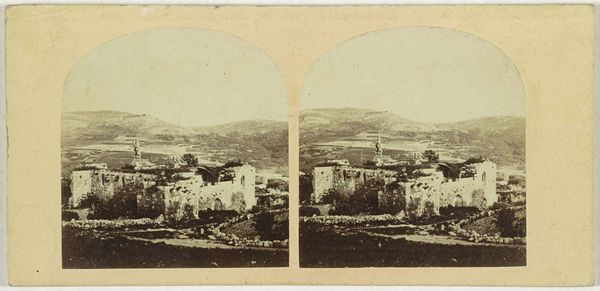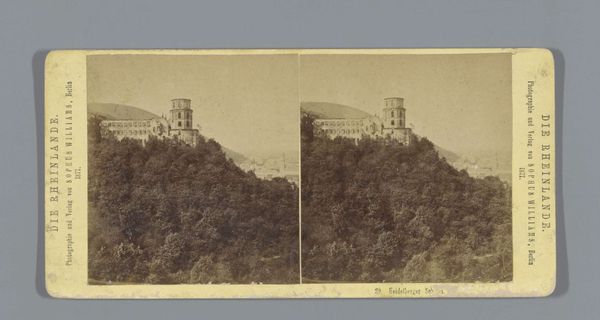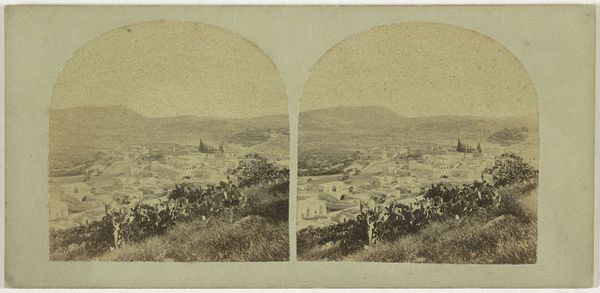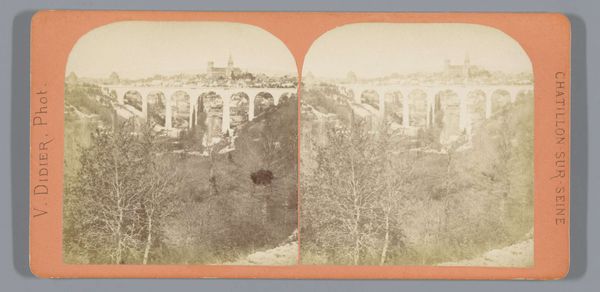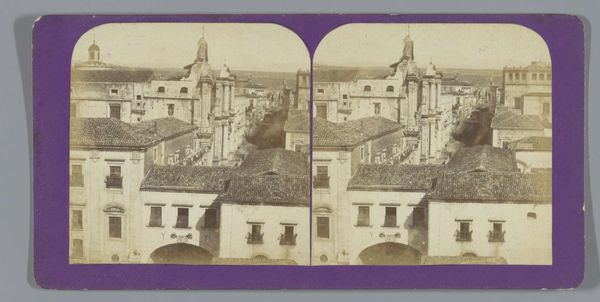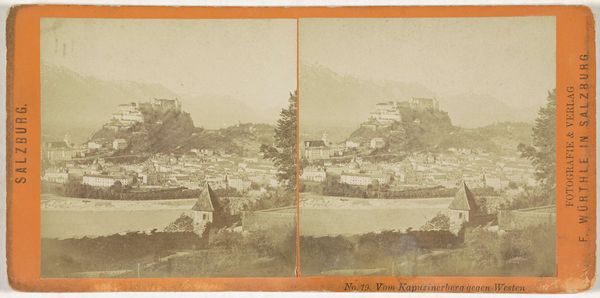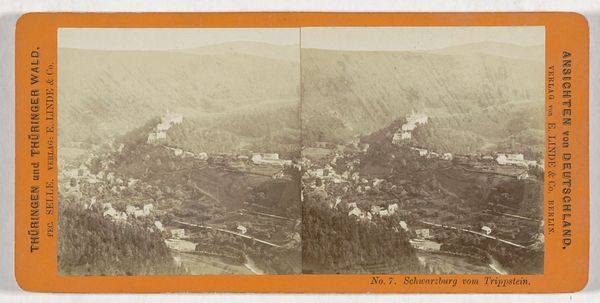
print, photography, albumen-print
# print
#
landscape
#
photography
#
coloured pencil
#
orientalism
#
cityscape
#
albumen-print
Dimensions: height 87 mm, width 178 mm
Copyright: Rijks Museum: Open Domain
Editor: Here we have Ernest Lamy's "Gezicht op Ariccia," a stereoscopic albumen print dating sometime between 1861 and 1878. It’s interesting how photography, still relatively new, was used to capture and reproduce these landscapes for a wider audience. What do you see in this piece? Curator: I’m struck by the implications of the albumen print itself. It’s not just an image; it's a material object produced through a specific process, involving resources and labor. Think about the albumen – derived from egg whites – and the industrial scale of egg production needed to support photography at this time. What does that say about the social and economic context surrounding this seemingly simple landscape? Editor: So, you're suggesting we look beyond the picturesque scene and consider the means of its creation? Curator: Exactly! Consider also the "stereoscopic" aspect. It was designed to create an illusion of depth for viewers, essentially manufacturing a simulated experience of being in Ariccia. It democratizes the access, right? But it also cheapens real travel...What is lost when experience becomes a commodity? Editor: I hadn't considered that before, but it's fascinating to think about how this technology both enabled and shaped perceptions of place. The contrast between the organic albumen and the mechanical process… Did the process have any influence on its widespread acceptance? Curator: Undeniably! The burgeoning middle class could participate in experiencing the “grand tour” via these portable landscapes. What was once limited to the aristocracy, with wealth and leisure, becomes increasingly commodified and attainable, thanks to processes and materials accessible to the growing Victorian public. Consider what this image *does,* as much as what it *shows*. Editor: That's a great point! I will always look beyond just subject matter now, and think of process, class, labour. Thanks so much! Curator: It's vital, yes. Never overlook the social forces embedded in art's production.
Comments
No comments
Be the first to comment and join the conversation on the ultimate creative platform.
